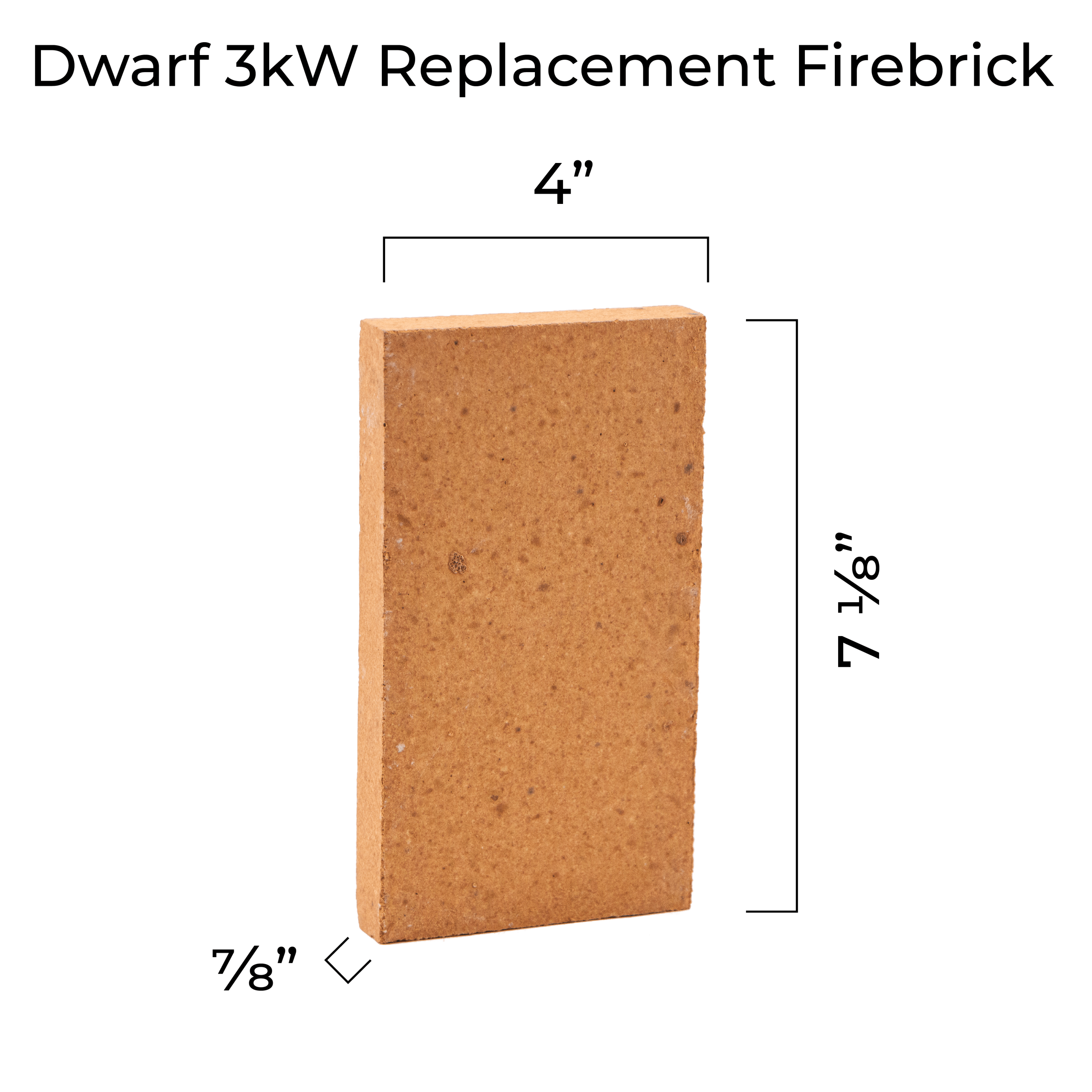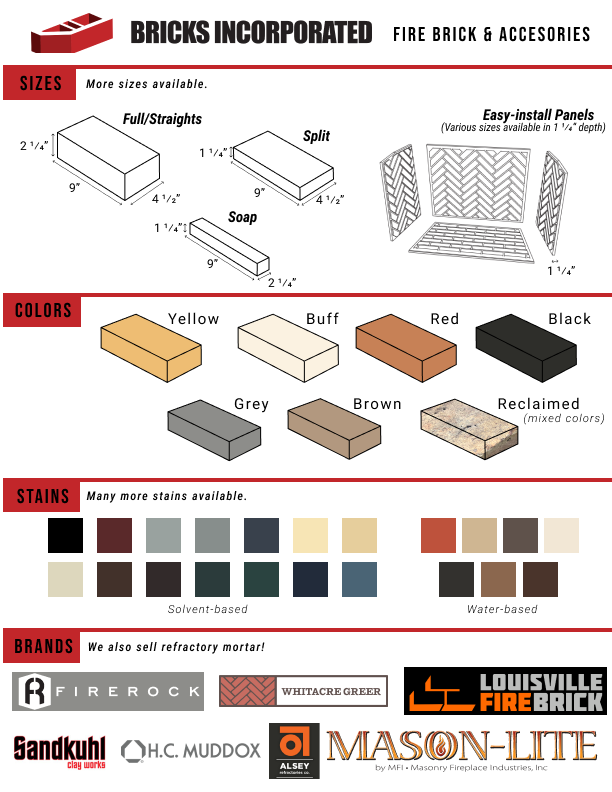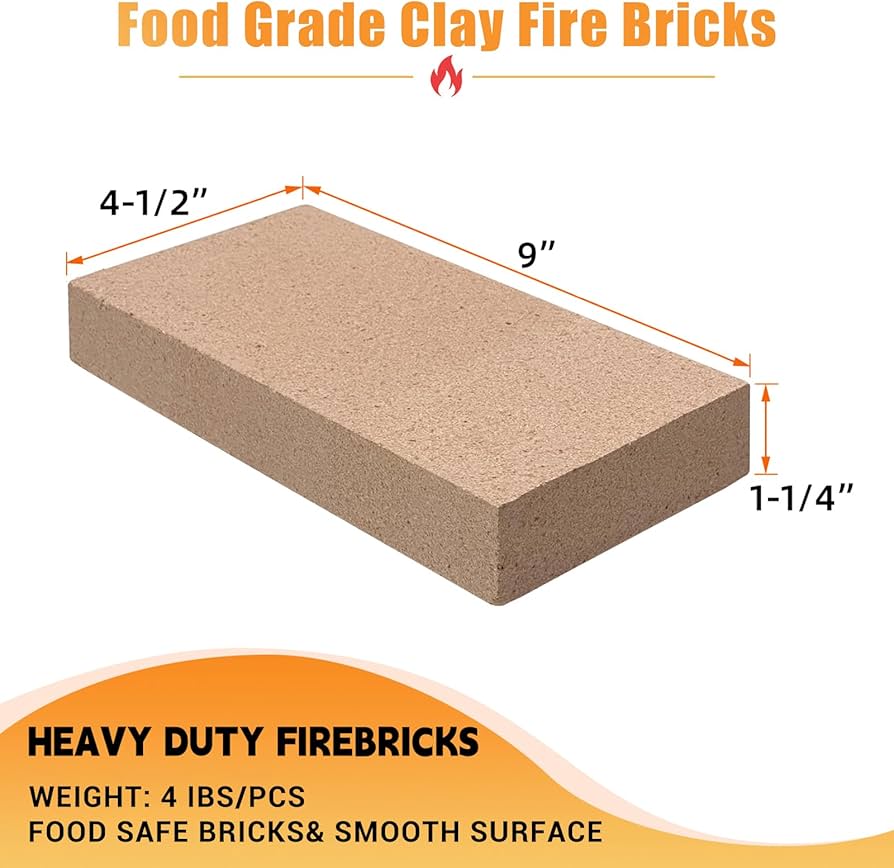Now, let me tell ya about fire bricks. These ain’t just any old bricks you see around a regular house. Nope, these are made to handle high heat, the kind that gets red hot. You see, fire bricks are used for stuff like furnaces, kilns, and even fireplaces where regular bricks would just crack. They’re made special so they don’t break under that heat, and they come in certain sizes.
Common Sizes of Fire Bricks


Most folks just want to know what sizes these fire bricks come in, right? Well, turns out, there are two main sizes folks use:
- 9 inches by 4.5 inches by 3 inches (229 mm by 114 mm by 76 mm)
- 9 inches by 4.5 inches by 2.5 inches (229 mm by 114 mm by 64 mm)
These sizes are pretty much standard, and folks use them all the time. But there’s also something called a “split,” which is just a thinner version. You can imagine it’s like half the thickness, and it works good for wood stoves and small fireplaces. Splits are nice if ya don’t need too much thickness but still want some good protection from the heat.
Why Use Fire Bricks?
Well, regular bricks, they don’t last long with heat. Put ‘em in a furnace, and they’ll crack before ya know it. Fire bricks, on the other hand, are made from a thing called fire clay, which they bake in a kiln till it gets tough. Some of ‘em even have a glazed surface, which just makes ‘em a bit stronger. These bricks can handle temperatures up to about 3,000 degrees Fahrenheit (1,649 degrees Celsius), which is mighty hot if you ask me.
They use these bricks for lining inside furnaces, where the heat’s so high it would melt regular bricks. Some bricks even have silica in ‘em, which makes ‘em perfect for steel-making furnaces. That’s why these fire bricks don’t just crumble under that crazy heat. You also find folks using them in wood stoves and fireplaces, places where ya got constant heat.
Different Uses of Fire Bricks


Now, it’s not just furnaces and fireplaces. Some folks are startin’ to look at fire bricks for a new purpose: storing energy. It’s like this: fire bricks can take on a lot of heat, and they hold onto it too. So, some people are thinkin’ they could store excess heat from factories and maybe even renewable electricity. They say it might save energy costs, but I’m no expert on that. Still, it’s kinda neat to think about, huh?
Choosing Fire Bricks for Home Use
If ya need fire bricks for a wood stove or a small fireplace, ya don’t always need the biggest ones. Most folks with wood-burning stoves go for the 2.5-inch thickness (or even thinner “splits”) because that’s just enough to handle the heat without takin’ up too much space. You see, these bricks are measured in inches and millimeters so that they fit right. A good ol’ 9 x 4.5 x 2.5 inch fire brick does fine for most home stoves.
But for decorative or gas fireplaces, they sometimes use a thinner fire brick wall, maybe just 1.25 inches thick. Those types don’t need as much heat resistance, so you can go a little thinner there.
Final Thoughts on Fire Bricks
Fire bricks are tough and reliable for high-heat places. Now, they don’t come in all sorts of sizes like regular bricks, but the sizes they do have sure do the job. If you’re lookin’ to line a furnace or fireplace, a good ol’ fire brick should do just fine. Just remember, get the right thickness for what you’re using it for, and these bricks should last ya a long time.


Tags:[fire brick sizes, fire brick thickness, standard fire brick dimensions, refractory brick uses, high-temperature bricks]


